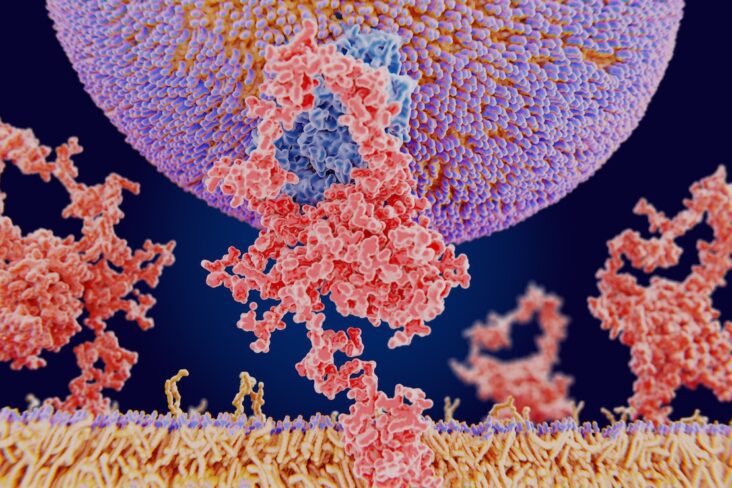
An article written by Dr Edward Leatham, Consultant Cardiologist
Tags: VAT, GLP-1, Inflammation, Diet, CKD, search website using Tags to find related stories.
If have been told your weight is high but your blood tests are “fine”, or if you are living with breathlessness or atrial fibrillation, you may be wondering how your body fat is really affecting your heart and lungs.
Many people are described as “healthy despite being overweight” – but is that the full picture?
At our cardiology clinic, we often see patients with irregular heart rhythms, breathlessness, or fatigue. They may have a high body mass index (BMI) but normal blood pressure, cholesterol, and glucose levels. Some are told they have “metabolically healthy obesity” – a term that suggests low metabolic risk despite extra weight.
However, recent research shows that this state may be temporary – and that the location and type of body fat may be a better predictor of long-term health than BMI or weight alone¹⁻².
1. Subcutaneous vs Visceral Fat: What Is the Difference?
Subcutaneous Fat – “The Fat You Can Pinch”
This fat lies just beneath the skin. It is most obvious on the belly, thighs, arms or hips and is what gives the body its visible shape.
While excessive amounts can cause discomfort and increase load on joints and the lungs, subcutaneous fat is often considered less dangerous from a metabolic point of view – especially when stored in the hips and thighs. It can act as a safe storage depot, helping to prevent fat from building up in more harmful locations.
Visceral Fat – “The Fat You Cannot See”
Visceral adipose tissue (VAT) is stored deep in the abdomen, wrapped around the liver, intestines, pancreas and other organs. This internal fat is metabolically active and is strongly linked with:
- Type 2 diabetes
- High blood pressure
- Fatty liver
- Stroke and heart attack
- Atrial fibrillation²⁻³
People with high visceral fat often have normal body weight or appearance, but elevated health risks. You cannot always see this fat, and it is not picked up by the bathroom scale.
2. Waist Circumference Can Be a Warning Sign
A simple way to estimate visceral fat is by measuring waist circumference.
If your waist is more than half your height, this may indicate unhealthy levels of VAT – even if your BMI is in the “healthy” range.
At Surrey Cardiovascular Clinic, when waist-to-height ratio exceeds 0.5, we may offer a low-dose CT scan to directly measure visceral fat volume. This helps us understand whether your primary health burden is:
- Mechanical – from the weight itself (which increases demand on the heart, lungs, and joints), or
- Metabolic – due to excess VAT and its effects on glucose, lipids, and inflammation³⁻⁴
Some patients with low BMI but low skeletal muscle mass have unhealthy visceral fat levels. Others with obesity may have low VAT and be metabolically well. This is why VAT measurement helps guide the right treatment priorities for your specific fat profile.
3. What About Muscle Mass?
Skeletal muscle plays an important role in metabolic health and physical function.
A person with low muscle mass – especially if physically inactive – may appear lean but still have:
- High VAT
- Poor insulin sensitivity
- Increased risk of frailty, falls, and chronic fatigue
You do not need a referral to access a DEXA scan, which is a safe, low-radiation test that provides:
- Visceral fat volume
- Subcutaneous fat distribution
- Skeletal muscle mass estimates
This test can be very helpful in building a tailored weight and health improvement plan, especially if symptoms like fatigue or breathlessness are out of proportion to BMI.
4. How Excess Fat (Even Subcutaneous) Affects the Heart and Lungs
Even if fat is stored subcutaneously and not causing metabolic dysfunction, it still increases mechanical load on the heart and lungs.
Each additional kilogram of fat tissue requires blood flow, oxygen, and support from the cardiovascular system. This raises cardiac output (how much blood your heart needs to pump), even when you are at rest.
If you have atrial fibrillation, a condition where the heart beats irregularly, this extra demand can worsen:
- Palpitations
- Exercise intolerance
- Symptom frequency and severity
People with AF or borderline heart function often notice that even modest weight loss improves their ability to breathe, exercise, and sleep better – even if blood tests are normal².
5. The “Metabolically Healthy Obese” – Is It a Safe Zone?
Some people with obesity have normal:
- Blood pressure
- Cholesterol
- Liver function
- Blood sugar (HbA1c)
These individuals are often described as having “metabolically healthy obesity” (MHO). But this is often a temporary state.
Studies show that:
- Up to 60% of MHO individuals will eventually develop metabolic syndrome
- MHO still carries increased risk of cardiovascular disease
- If visceral fat increases or muscle mass decreases, metabolic risk rises rapidly⁴⁻⁵
So while someone may start in a low-risk zone, weight gain, ageing, or inactivity can trigger a switch to high-risk status within a few years.
6. Understanding Your Carbohydrate Sensitivity: The Role of CGM
Another important tool in personalising treatment is continuous glucose monitoring (CGM).
Many high-VAT individuals show signs of a carbohydrate-sensitive phenotype, where certain starchy or sugary foods cause exaggerated blood sugar spikes – even without diabetes⁵.
Using CGM, we can:
- Identify your unique glucose responses
- Spot patterns of hidden insulin resistance
- Tailor dietary advice more precisely
Patients with a carbohydrate-sensitive profile often benefit from starting with a low-carbohydrate or low-glycaemic diet, which can improve:
- Blood sugar control
- Hunger and satiety
- Visceral fat reduction
- AF control and blood pressure
You can read more about this approach in our companion blog on CGM and VAT [insert link to CGM blog].
7. Treatment Options: Lifestyle First, Medications If Needed
If you have high VAT or show signs of metabolic dysfunction, the first line of treatment involves lifestyle strategies that specifically target VAT:
- Low-glycaemic eating patterns
- Protein optimisation
- Resistance training
- Aerobic fitness
- Improved sleep and alcohol moderation
However, for those with persistently high VAT or higher cardiovascular risk, GLP-1 receptor agonists (such as semaglutide or liraglutide) may be appropriate⁶.
These medications can:
- Help reduce visceral fat more effectively than diet alone⁶
- Suppress appetite and support sustained weight loss
- Improve AF control and reduce cardiovascular risk
- Support patients who struggle with weight plateaus or rebound
At our clinic, we assess your VATI (visceral adipose tissue index) alongside your clinical picture to guide when and if pharmacological support is appropriate.
8. Summary and Next Steps
- “Pinchable” fat may look harmless, but excess subcutaneous fat still increases load on the heart and lungs
- Visceral fat is a key driver of diabetes, heart disease, and AF – even in people who appear lean²⁻⁴
- Tools like DEXA, low-dose CT, and CGM allow us to uncover hidden risks and build better action plans³⁻⁵
- A low-carb diet may suit VAT-dominant, carbohydrate-sensitive individuals⁵
- If lifestyle is not enough, GLP-1 receptor agonists can safely and effectively reduce VAT⁶
Would You Like to Know Your Fat Profile?
If you are breathless, struggling with atrial fibrillation, or concerned about your long-term health, we can help assess your body fat, glucose profile, and metabolic risk.
We offer:
- DEXA or low-dose CT scanning
- Metabolic blood panels and CGM
- Personalised action plans
- Medication support when needed
Let us help you go beyond the bathroom scale – and build a plan for better long-term health.
References
- Shah RV, Murthy VL, Abbasi SA, et al. Visceral adiposity and the risk of metabolic syndrome: the MESA study. Obesity (Silver Spring). 2014;22(5):103–111. Free full text
- Lee YH, Kim Y, Song K, et al. Impact of visceral obesity on incident metabolic syndrome in healthy adults. J Clin Endocrinol Metab. 2020;105(3):dgaa101. Free full text
- Ruiz-Castell M, Samouda H, Bocquet V, et al. Estimated visceral adiposity and cardiometabolic risk: a population-based study. Sci Rep. 2021;11:9121. Open access
- Duan K, et al. Effect of GLP-1 RAs on fat distribution: VAT and SAT reduction in T2D. Diabetes Therapy. 2022. Free via PMC
- Szekeres Z, Nagy A, Jahner K, Szabados E. GLP-1 receptor agonists and tissue metabolism: a review. Int J Mol Sci. 2024;25(15):8214. Open access
- Liao C, Liang X, Zhang X, Li Y. GLP-1 RAs reduce visceral and liver fat: meta-analysis. PLoS One. 2023;18(8):e0289616. Free full text
Let me know if you would like this blog converted to a PDF handout with clinic branding, or repurposed into a CGM/VAT patient explainer, waiting room slide, or email follow-up template.
Other related articles
- Carbohydrate Sensitive Phenotype (CSP): Precursor of the Metabolic Syndrome?
- Anthropometrics vs BMI: Why Waist Measures Outperform BMI in Cardiovascular Risk Assessment
- Why I Eat a Cooked Breakfast to Lower My Visceral Fat
- “Why Am I Out of Breath?” — The Hidden Link Between Belly Fat and Breathlessness
- Why everyone is talking about VAT
- How to Lose Visceral Adipose Tissue (VAT) and Improve Metabolic Health: A Guide to Sustainable Weight Loss
- The Expanding Waistline in Men: Spare Tyre, Killer Visceral Fat, or Just Flabby Abdominal muscles?
- From Genes to Greens: How DNA Shapes Your Nutritional Needs
- The 8-Month Metabolic Reset: A New Approach to Reversing Visceral Fat, Improving Blood Pressure and Blood Glucose




